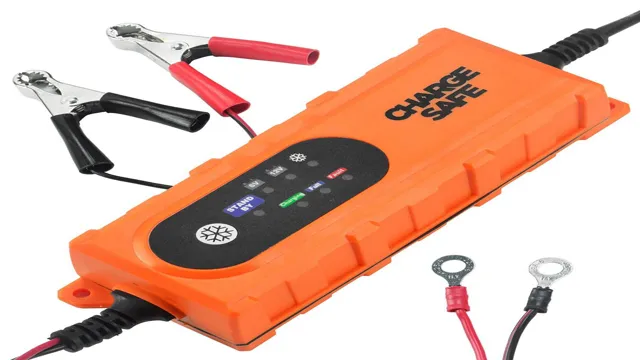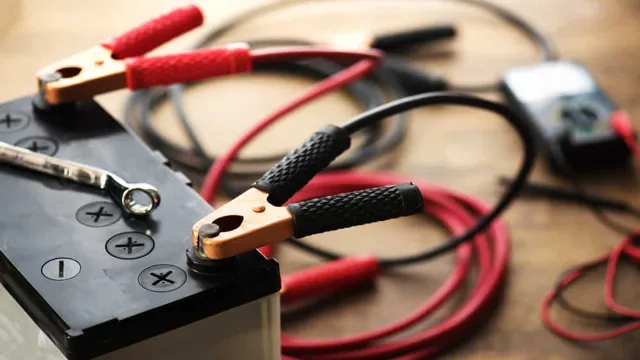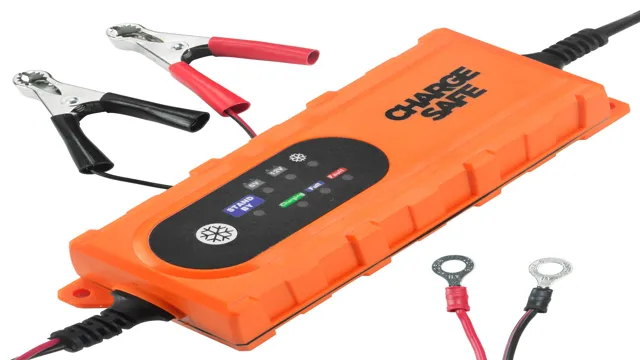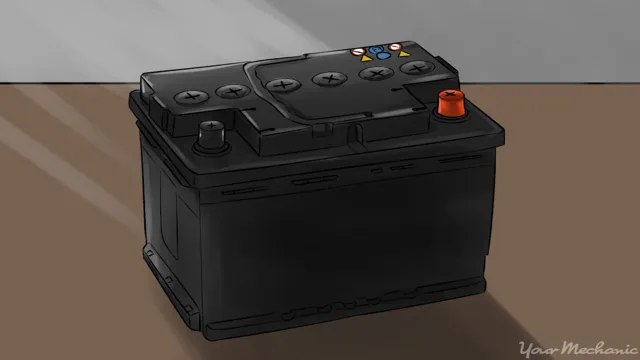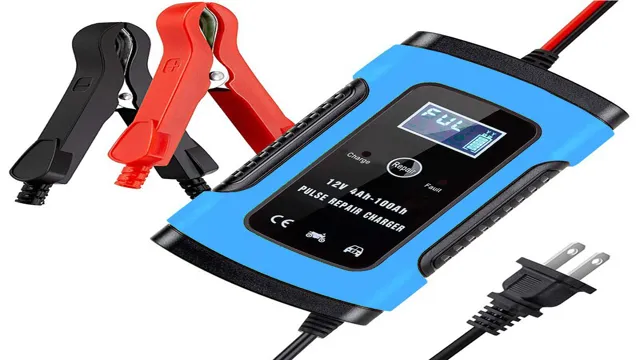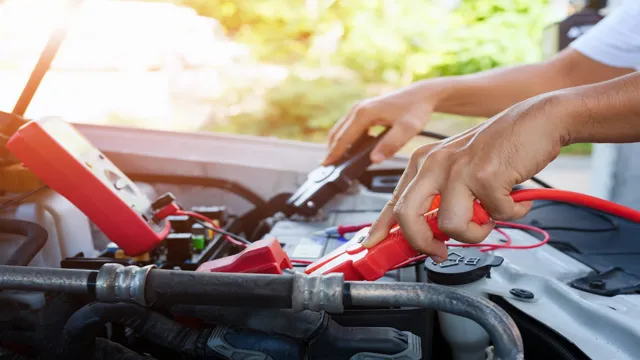How to Use an Electric Car Battery Charger: Expert Tips and Tricks

As the world is shifting towards greener alternatives, Electric Cars have been a topic of discussion for some time now. One of the biggest challenges of owning an electric car is finding suitable battery charging solutions. This is where electric car battery chargers come into play! Electric car battery chargers are devices used to recharge the battery of an electric vehicle.
These chargers tend to be more advanced and efficient compared to traditional car battery chargers. Are you considering purchasing an electric car battery charger, but not sure where to start? This blog will provide you with all the information you need about using an electric car battery charger. From understanding the different types of electric car chargers to tips on how to use them effectively – keep reading to learn more.
Think of an electric car battery charger as a fuel station, but for your electric vehicle. Just as you fill up your gas tank at a fuel station, you can charge your electric vehicle battery using a charger. But, how do you know which charger to use and how long to leave your car charging for? Don’t worry, we’ve got you covered.
In this blog, we will also discuss the different charging speeds, charging levels, and the importance of using the correct cables and connectors. Plus, we’ll provide you with tips on how to maximize the battery life of your electric car. So, whether you’re a first-time electric car owner or a seasoned pro, buckle up and join us on this informative journey about using an electric car battery charger.
Understanding the Types of Chargers
If you’re new to using an electric car battery charger, it’s important to understand the different types available. The two main types of chargers are Level 1 and Level Level 1 chargers are typically included when you purchase an electric car, and they plug into a standard household outlet.
These chargers are convenient but slow, typically taking around 8-12 hours to fully charge your car’s battery. Level 2 chargers are faster and require a dedicated charging station and professional installation. They can charge your battery in as little as 4 hours, making them a great option for those with longer commutes or more frequently used electric cars.
It’s important to choose the right charger for your needs and ensure that you use it correctly to extend the life of your car battery.
Level 1 Charger vs. Level 2 Charger
When it comes to electric vehicle charging, there are two common types: Level 1 and Level 2 chargers. A Level 1 charger is your vehicle’s standard charging cable that can be plugged into any standard home outlet. It’s relatively slow and can take up to 12 hours to fully charge your vehicle’s battery.
On the other hand, a Level 2 charger requires professional installation and is capable of charging your vehicle’s battery much faster. Depending on your vehicle’s battery capacity, a Level 2 charger can fully charge your car’s battery in just a few hours. It’s important to note that not all electric vehicles can handle the same charging speeds, so it’s crucial to do your research and ensure that your vehicle is compatible with a Level 2 charger before investing in one.
Overall, a Level 2 charger is a great investment for those who need to charge their vehicle quickly and efficiently, while a Level 1 charger is convenient for occasional charging needs.
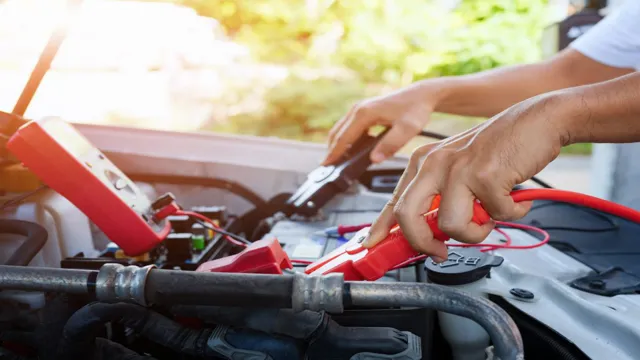
Fast Charger vs. Slow Charger
When it comes to charging our smartphones or other electronic devices, we often come across two types of chargers: fast chargers and slow chargers. Fast chargers are capable of charging our devices at a much faster rate than slow chargers. However, it’s important to understand that not all devices are designed to be charged with a fast charger.
Using a fast charger on a device that is not compatible with it can cause damage to the battery and reduce its lifespan. Slow chargers, on the other hand, may take longer to charge our devices, but they are generally safer to use as they deliver a lower amount of power. It’s always a good idea to refer to the device’s manual or contact the manufacturer to ensure that you’re using the right type of charger for your device.
In the end, it’s better to be safe than sorry when it comes to the batteries of our precious devices.
Preparing Your Car and Charger for Charging
If you’re new to electric cars, charging your vehicle may feel unfamiliar. But don’t worry, it’s a simple process once you know what to do. Before you plug in, it’s important to prepare both your car and charger for charging.
First, check the charging capacity of your car’s battery and the charging speed of your charger. Make sure they’re compatible, and if necessary, invest in a charger that’s compatible with your car. Next, ensure that your car is parked safely and that the charger’s cable can reach the car’s charging port.
Finally, make sure that both the car and charger are switched off before you begin charging to avoid any accidents. Following these simple steps will help you to use your electric car battery charger safely and efficiently.
Checking Your Car’s Compatibility with Charger
If you’re planning on charging your electric car at home, it’s essential to ensure that your car and charger are compatible. Before starting this process, you need to ensure that your car’s battery and charging system can handle the charger’s power output. It’s important to know the voltage and amperage requirements for your car’s battery, as well as your electric vehicle charger’s output.
You can easily find this information in your car’s manual or by checking with the manufacturer. Once you have confirmed that your car is compatible, it’s time to prepare your charger. Make sure to install the charger in a location with proper ventilation and cooling, and that it’s free from any obstructions.
It’s also recommended to use a surge protector to prevent any electrical fluctuations and to ensure your safety. By taking these necessary steps, you can guarantee a safe and efficient charging experience for your electric car.
Locating the Charging Port and Connecting the Charger
When it comes to electric car charging, the first step is finding the charging port and connecting your charger. The location of your charging port may vary depending on your car’s make and model, but it is typically located on the front grille, the rear bumper, or the side of the car. Once you have located the charging port, you will need to ensure that your charger is compatible with your car.
Different cars require different chargers, so be sure to check your car’s manual or consult with a professional to find the right charger for your vehicle. Once you have the right charger, it’s a matter of plugging it into the port and letting it charge. Charging times may vary depending on the size of your battery and the type of charger you are using, but most electric cars can be charged in a matter of hours.
So whether you are at home or out and about, charging is convenient and easy – just plug in and let your car do the rest!
Ensuring Proper Ventilation and Safety Measures
When it comes to charging your electric car, it is essential to ensure that both your car and charger are adequately prepared to avoid any safety risks. One crucial consideration is proper ventilation. While electric vehicles and chargers are generally safe, it is still essential to keep the area well-ventilated.
This is because the charging process produces heat, and if the heat cannot escape, it can result in potential damage to the battery pack or even a fire hazard. To mitigate this risk, ensure that the charging area is adequately ventilated and avoid charging in enclosed spaces. Additionally, always ensure that your charger is functioning properly and has no visible damage before plugging it in.
By taking these simple yet critical precautions, you can safely and confidently charge your electric vehicle at home.
Charging Your Electric Car
If you’re new to electric cars, charging might seem complicated, but it’s actually pretty straightforward. Most electric cars come with a portable charger that can be plugged into a regular 120-volt outlet. This is good for a slow charge that can take anywhere from 8 to 12 hours, perfect for overnight charging.
However, if you need a faster charge, you can install a level 2 charger which operates on a 240-volt outlet and can charge your car in about 3 to 4 hours. Be mindful of the type of plug required by your electric car battery charger, as there are a few different kinds out there. Using an extension cord is not recommended, as it could cause issues with overheating.
Knowing your car’s battery charge level is important, but most electric cars come with a smartphone app or dashboard display that shows you the car battery level. Charging an electric car is becoming easier and more accessible with the increasing number of public charging stations, making it a great time to make the switch to an electric vehicle and join the cleaner, more sustainable energy revolution.
Setting the Charger’s Voltage and Amperage
When it comes to charging your electric car, it’s important to set the charger’s voltage and amperage correctly. The voltage determines how much energy the battery can receive, while the amperage determines how quickly that energy can be delivered. It’s important to follow the specifications given by your car manufacturer or charger manufacturer to avoid any damage to the car or charger.
Additionally, it’s important to ensure that the charger is compatible with your car’s battery. Charging at a higher rate can result in a faster charging time, but it can also put more stress on the battery, which may lead to a shorter lifespan. Ultimately, it’s important to find a balance between the charging time and the health of your car’s battery.
So, make sure you choose the right charger, set the voltage and amperage correctly, and keep an eye on your car’s battery health to ensure a long and healthy lifespan for your electric car.
Monitoring the Charging Process
When charging your electric car, it’s important to monitor the charging process to ensure everything is running smoothly. One thing to keep in mind is that the charging time and rate can vary depending on the type of charger you’re using. For example, a level 1 charger that plugs into a standard household outlet might take significantly longer than a level 3 DC fast charger at a charging station.
Monitoring the charging progress can be done using your car’s dashboard, the charging station’s display, or a charging app on your phone. You’ll be able to see things like the charging rate, estimated time until full charge, and any charging errors or interruptions. This can be especially helpful if you’re charging at a public station and need to keep an eye on your car’s charge while running errands or grabbing a bite to eat.
By monitoring the charging process, you can ensure that your electric car is charging properly and avoid any surprises when it’s time to hit the road.
Finishing the Charging Process
If you’re new to owning an electric car, learning how to use an electric car battery charger can seem daunting. However, the process is relatively straightforward. Once you’ve found a suitable charging station, simply plug your car into the charging cable and wait for the charging process to begin.
Most chargers will have an indicator light that shows when the charging process has started. Depending on the level of charge needed and the charging station’s capabilities, the process can take anywhere from 30 minutes to several hours. Once the battery is fully charged, the charging station will automatically stop the charging process.
It’s important to note that leaving your car plugged in after the charging process is complete can cause unnecessary wear and tear on the battery. So, be sure to unplug your car as soon as the charging process is finished to keep your battery in top condition.
Unplugging the Charger from Car and Outlet
Unplugging the charger from both the car and the outlet is a crucial step in finishing the charging process. After your battery is fully charged, disconnect the charging cable from both ends to avoid any overheating or damage to the battery pack. Ensure that the charging process is complete before unplugging the charger, as you don’t want to risk a premature disconnect.
Although it’s tempting to leave the charger plugged in and forget about it, overcharging can damage the battery or create a fire hazard. It’s best to unplug your charger as soon as your battery has reached full capacity. By doing so, you extend your battery’s lifespan, reduce your energy consumption, and ensure safety.
So, remember to unplug your charging cable from both your car and outlet once your battery is fully charged!
Storing and Maintaining Your Charger
Finishing the charging process is crucial to the overall health and longevity of your charger. Once your device has reached full battery capacity, be sure to unplug it from the charging outlet to prevent overcharging. This not only protects your charger from potential damage but ensures that your device does not experience any overcharging which can cause the battery to degrade faster.
Additionally, it’s crucial to store your charger in a cool and dry environment. Avoid placing it in direct sunlight or near any sources of heat. This can cause your charger to overheat and potentially start a fire.
By taking these simple steps, you can ensure that your charger remains in excellent condition for years to come.
Conclusion
In short, using an electric car battery charger is as simple as plugging it in and letting it work its magic. But why settle for the mundane when you can make charging your car a truly electrifying experience? Transform your charging routine into a high-voltage adventure by blasting your favorite tunes, treating yourself to a refreshing beverage, or even starting an impromptu dance party. Who knew charging your car could be this charged? So go ahead, plug in, power up, and let the good times roll!
FAQs
What is an electric car battery charger and how does it work?
An electric car battery charger is a device used to recharge the battery of an electric car. It works by converting the AC power from a wall outlet into DC power that is compatible with the electric car’s battery.
Can I use any type of electric car battery charger for my car?
No, you cannot use any type of electric car battery charger for your car. You need to use a charger that is compatible with your electric car’s battery type and voltage.
How long does it take to charge an electric car battery?
The time it takes to charge an electric car battery depends on the capacity of the battery and the charging speed of the charger. It can take anywhere from a few hours to a full day to fully charge an electric car battery.
How often should I charge my electric car battery?
You should charge your electric car battery as often as necessary to keep it at an optimal level. It is recommended to charge your electric car battery at least once a week, even if it is not completely discharged.
What safety precautions should I take when using an electric car battery charger?
When using an electric car battery charger, you should always follow the manufacturer’s instructions and safety guidelines. Avoid exposing the charger to moisture or extreme temperatures, and keep it away from children and pets.
Should I leave my electric car battery connected to the charger after it is fully charged?
It is not necessary to leave your electric car battery connected to the charger after it is fully charged. In fact, it is recommended to disconnect the charger to avoid overcharging the battery.
What should I do if my electric car battery is not charging?
If your electric car battery is not charging, there may be an issue with the battery itself or the charger. Check the battery and the charger for any visible damage or signs of malfunction, and contact a professional if necessary.

